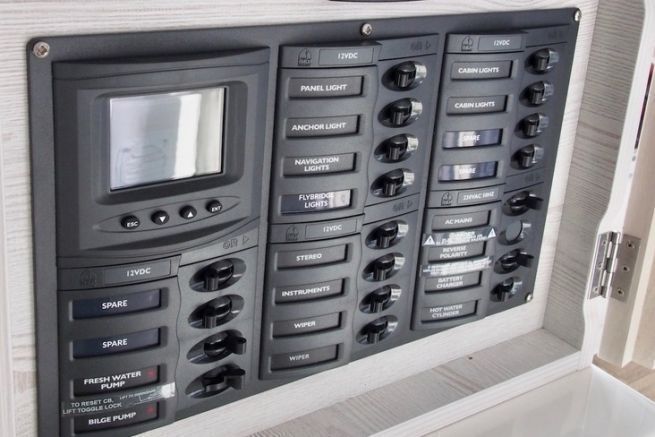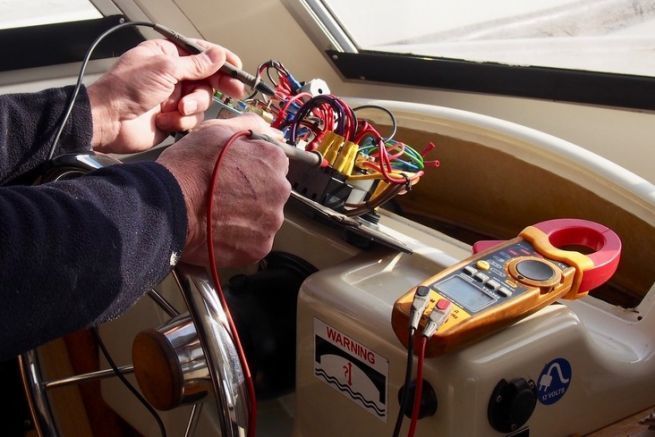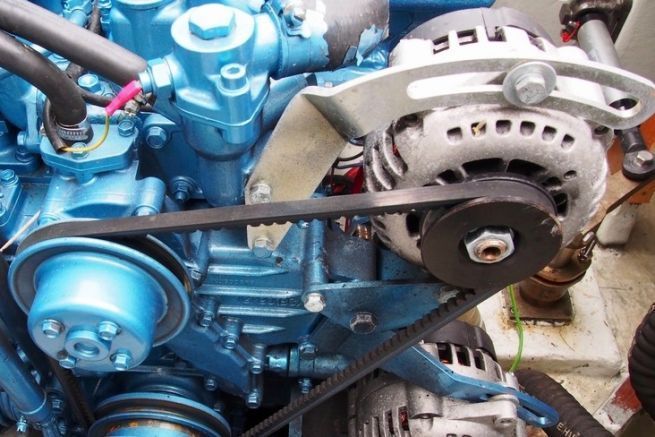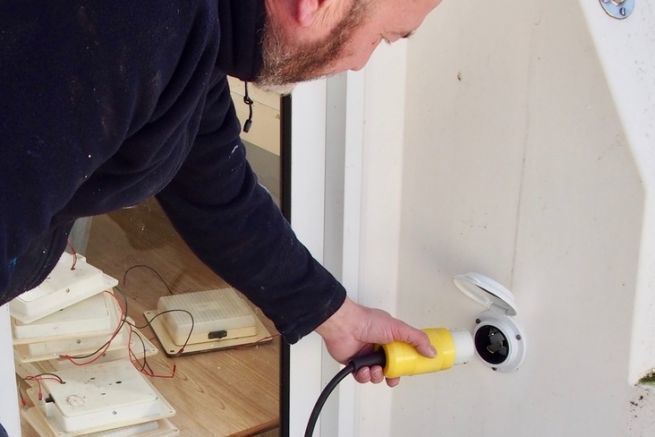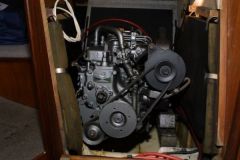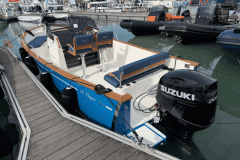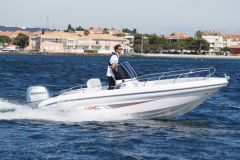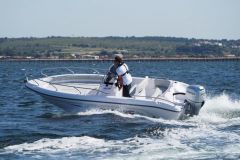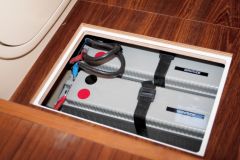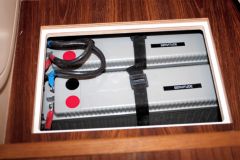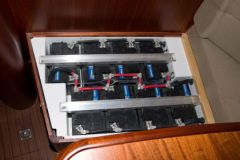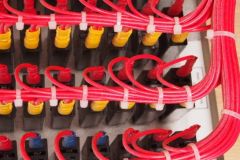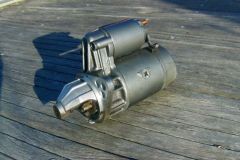For a long time, ships did not need electricity. Their needs were met by fuels that were stored on board and which offered real autonomy. The electricity fairy came on board, as it is true that it is easier and safer to press a button than to fill the tank, to strike a match and then to adjust a flame so that it does not smoke... The comfort of our modern boats depends on electricity, yet the analogy with ancient energies remains valid: it is stored on board and one must always remember to fill up, even if the tanks are now batteries.
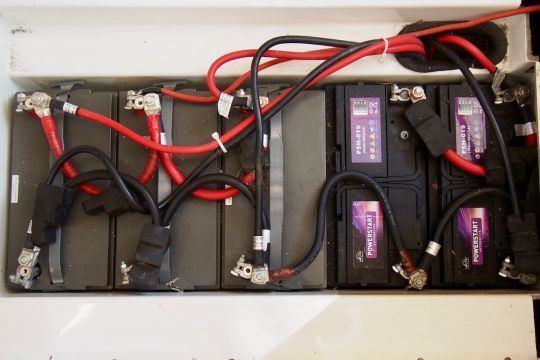
Needs in accordance with its means
When thinking about electricity on board, we must think in terms of needs and measure them clearly in order to adopt the most efficient means to satisfy them. Of course, we think of navigation electronics, lighting, pumps, recharging of mobile devices, starting of the mechanics, and possibly cold or heating. The necessary energy is provided by the batteries (which allows you to benefit from them during navigation). It can be completed by the domestic network during stays at the quay. This allows to have a comfort "like at home", but imposes to dispense with it as soon as we cast off.
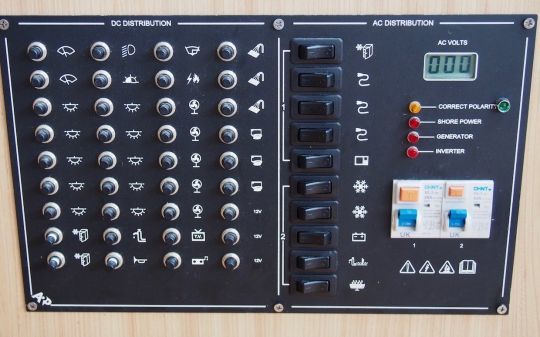
The battery is at the heart of the electrical circuit
The power supply on batteries is generally done in direct current 12 or 24 volts, while the terrestrial network is in 220 volts alternating, two voltages incompatible between them without passing by a converter device.
The battery is at the heart of the low voltage circuit. It stores the energy and restores it to power each device via 2 conductors, one positive and one negative. Nothing complex and only the multiplication of devices generates a confusing bundle for the uninitiated. A single battery is generally not enough to supply all the needs, that is why we use several adapted to each use: engine, domestic uses - servitude or even bow thruster. This also prevents the discharge of one from prohibiting the other uses.
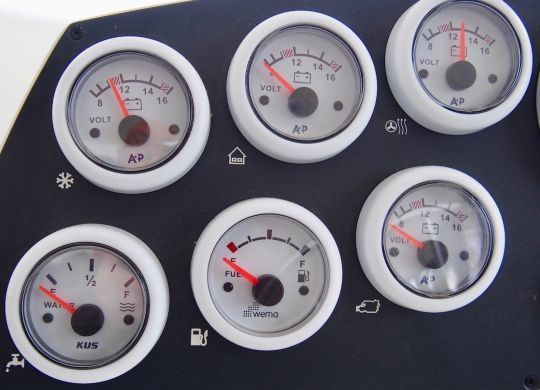
Three distinct circuits
Each of these parks is connected to the electrical panel from which each of the devices is powered. These batteries must be recharged regularly, whether by the engine alternator, a shore charger, a solar panel or a wind turbine, which is done through a charging circuit. Our recent boats are therefore equipped with 3 main circuits that are independent of each other: the charge, the 12 volt power supply and possibly the 220 V when a shore power is connected.

It's written on it!
A battery is defined by its voltage and by its capacity to restore energy, expressed in Ampere x hour (Ah). Thus a 100 Ah battery will theoretically be able to deliver 100 A for 1 hour, or 10 A for 10 hours. Theoretically, because not all technologies allow batteries to undergo a deep discharge without damage (up to 80% for gel models and 50% for those with liquid electrolyte). Each electrical appliance is marked with its voltage and power in Watts or the current in Amperes necessary for its operation. These indications are precious. They allow you to estimate the amount of energy you will need.
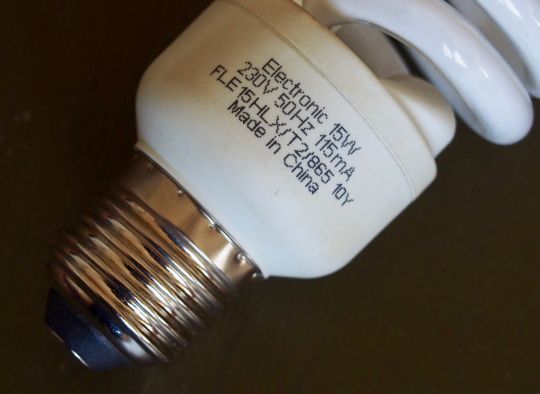
List the consumers
To do this, an electrical balance is made. It consists in referencing all the consumers, estimating the daily duration of use of each one and adding up their consumptions (obtained according to the unit used (Wh or Ah, by multiplying the power or current intensity by the operating time). From the navigation light to the electronics, passing by the fridge, the lighting or the possible air conditioning, it is a bit tedious, but very instructive.
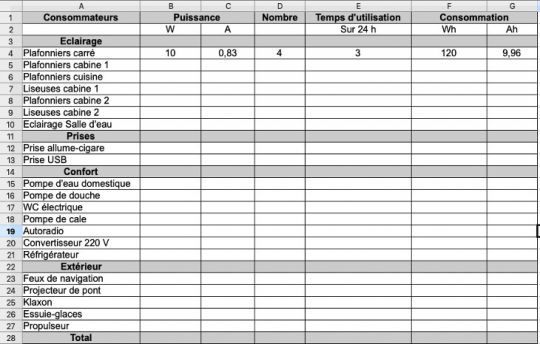
It is the occasion to measure the gain you could expect by replacing your bulbs by leds, or to become aware of the big consumers on board. To simplify your life, you can use one of the many calculation tables available on the Internet. By doing the same calculation for the charging circuit, you will be able to estimate its real degree of energy autonomy.
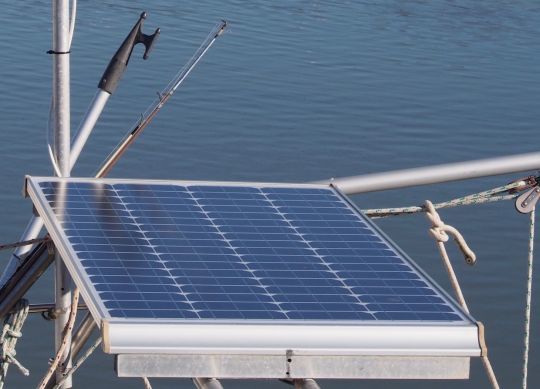
The formula to know
P = U x I is the formula that reminds us of our school days and the relationships between power (expressed in Watts), voltage (in Volts) and current (in Amperes). It is used to calculate the combined power of the elements of an installation during the energy balance, but also the size of the necessary protections (fuses or circuit breakers) for each device. For example, a 12-Volt circuit supplying a 120-Watt appliance will have a current of 10 Amperes flowing through it (120W/12V = 10A). Thanks to this formula, we can easily calculate the battery capacity needed to power our devices, or more prosaically the amount of energy available in our battery for our devices.
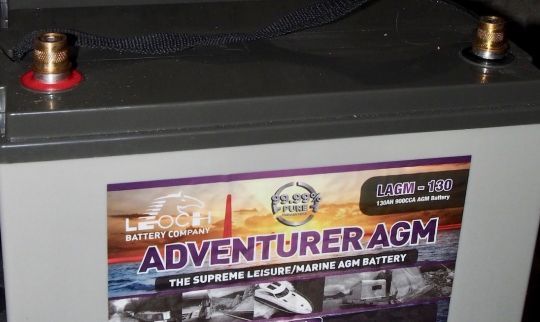
Cautionary note
Even in low voltage, electricity is dangerous and one should be careful not to do anything! If you have any doubts about your own skills, you should call in a professional for any circuit modification.

 /
/ 

